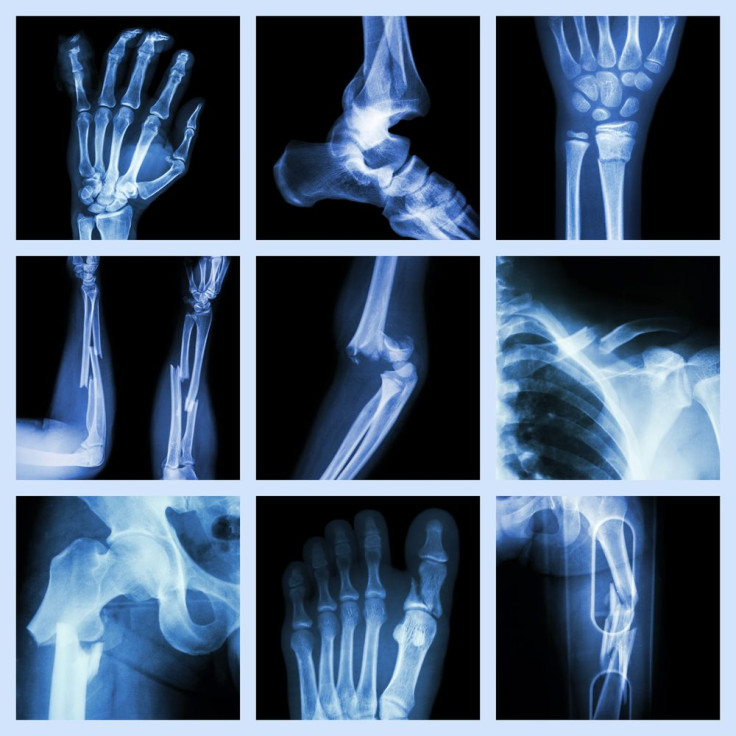Broken Bones Don't Heal Like Doctors Thought They Did; Fibrin's Real Role In Wound Healing

Medical textbooks teach that the presence of fibrin, a protein involved in blood clotting, is essential to bone fracture repair. But a recent study suggests this isn’t completely accurate. According to the researchers, it’s not the presence of fibrin itself that helps to heal bone fractures but the way in which it breaks down. The groundbreaking research, published in the Journal of Clinical Investigation, could be key to helping adults with fractured bones heal just as well as children.
When we bleed, a protein known as fibrinogen is converted into fibrin. Fibrin then travels to the injury site and helps to stop bleeding by forming a mesh that holds platelets together — otherwise known as a blood clot. Although bones may seem to be dense structures, they are actually porous, complete with their own set of tiny blood vessels. When a bone breaks, so do its blood vessels. Based on this idea, scientists hypothesized that the fibrin used to clot bleeding also played a role in fracture repair.
To test this, senior author Jonathan Schoenecker and his team of scientists from Vanderbilt University Medical Center in Nashville bred genetically altered mice to be unable to produce fibrinogen. Surprisingly, the mice’s bone fractures still healed without the presence of the clot-forming proteins. Previous research has shown that the reconnection of blood vessels is also an important part of bone repair. The team theorized that perhaps the blood clotting process blocked these blood vessels from reconnecting, thus impairing bone repair rather than promoting it.
So, they bred mice that could produce fibrinogen but lacked the factor necessary to clear it away. They found that the mice’s bone healing abilities were significantly impaired because their blood vessels were unable to effectively attach to the fracture ends. What’re more, mice without the ability to clear away fibrin developed heterotopic ossification, a condition that causes bones to grow bones inside the muscle.
The research has wide implications considering a large majority of medication that’s prescribed to promote bone healing is based on the fibrin theory. Although these drugs may work in some cases, Schoenecker said, most formulas probably won’t need fibrin in them.
The results may also explain why children are able to heal bone fractures more effectively than adults. Fibrinogen levels in our youth are nearly half what they are by the time we reach adulthood. "If we could lower fibrinogen levels — or increase the activity of enzymes that get rid of fibrin — we could make adult patients more like kids and improve healing," Schoenecker said in a statement.
This research comes only weeks after a study published in the Journal of Bone and Mineral Research detailed how cannabidiol (CBD), one of the main chemical components in marijuana, significantly speeds up the bone-healing process in lab mice. The study found that CBD alone makes bones stronger during the healing process, resulting in a harder bone that’s less likely to break in the future.
Along with helping to treat injury-related bone fractures, these findings could be helpful in developing treatments for other conditions, such as osteoporosis, and may even provide insight into new approaches to tissue repair and regeneration.
Source: Schoenecker JG, Yuasa M, Mignemi NA. Fibrinolysis is essential for fracture repair and prevention of heterotopic ossification. The Journal of Clinical Investigation. 2015.
Published by Medicaldaily.com



























